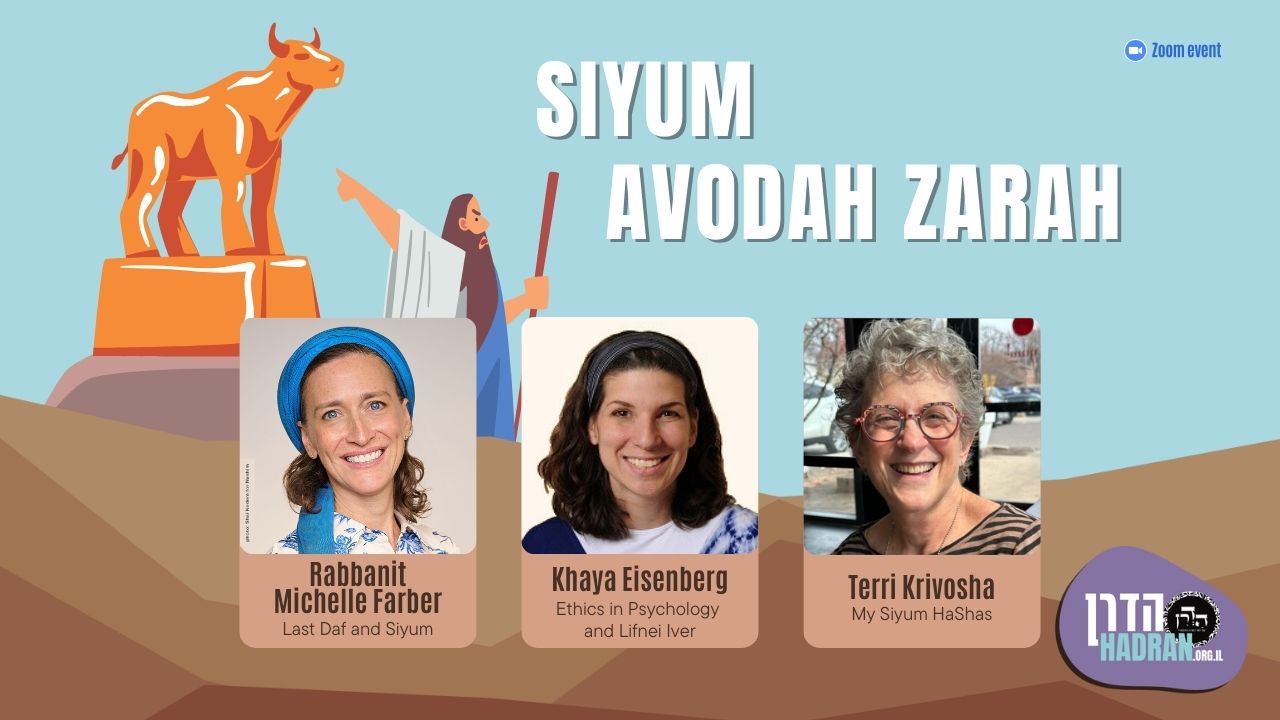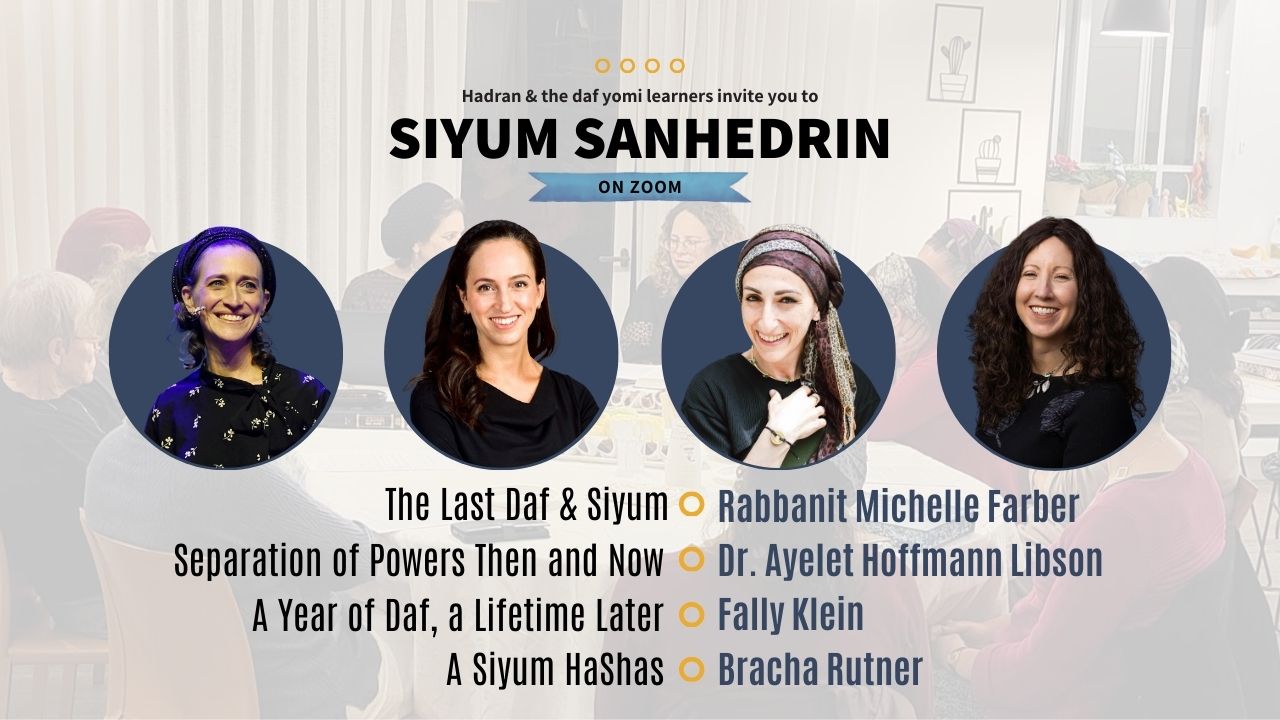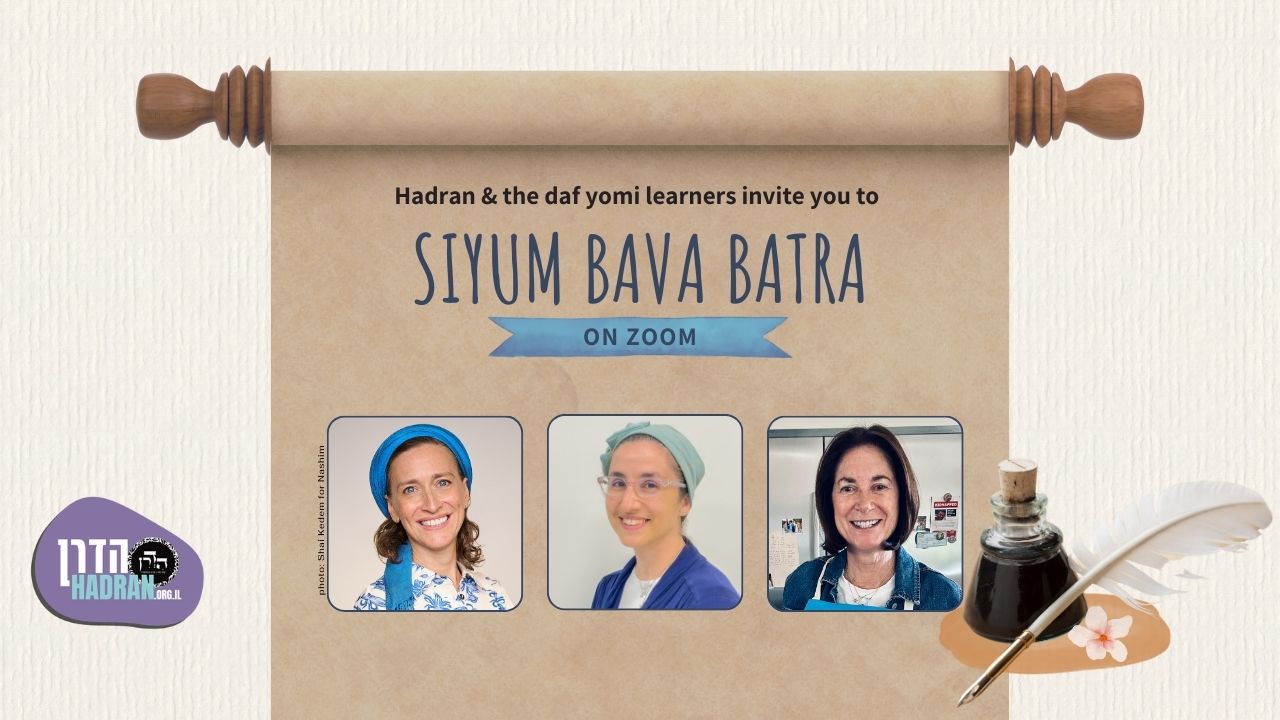What is a Siyum?
When one finishes learning a masechet, it is customary to have a gathering to celebrate the achievement. The siyum is both a public recognition of the learner’s extensive efforts in covering a particular Torah text, as well as an expression of gratitude to God for the ability to have reached this milestone.
The Gemara (Shabbat 118b) records that Abaye would make a “feast for the Sages” whenever a student of his finished a masechet. The Hagahot Ashri quotes Midrash Shir HaShirim Raba (1:9), which finds the source for the custom of the siyum in the feast that King Solomon hosted for his servants when he received infinite wisdom.
When to have a siyum
Ideally, one should hold the siyum immediately upon finishing the masechet. Often, however, a learner will delay the finish until a specific date.
What to do at a siyum
A siyum usually involves the actual completion of the masechet, recital of the Hadran text and Kaddish, sharing of divrei Torah and a festive meal.
When to have a siyum
Ideally, one should hold the siyum immediately upon finishing the masechet. However, the Arukh HaShulchan (YD 246:44) points to the Gemara in Moed Katan 9a – which debates whether King Solomon should have delayed the final stages of the Temple’s construction so that the culmination of the building and its ensuing consecration would fall on the nearest holiday – as proof that one can delay the end of a masechet until it is convenient.
Similarly, the Maharam Mintz (brought by the Shach, YD 246:27) says that one should leave a piece of text for the siyum day so that the learner can experience the true joy of finishing the tractate at the ceremony itself.
As such, one may choose to “hold off” on finishing a masechet until a date when one’s friends and family can gather to celebrate, or an important date such as an engagement party, wedding, or yahrzeit.

What to do at a siyum
The learner shares a Dvar Torah about the text learned, either at this point or during the seudat mitzva (see step 6).
The final lines of the masechet are read.
The learner recites the Hadran text (see details here).
If a minyan is present, Kaddish is recited. (Either Kaddish d’Itchadeta or Kaddish d’Rabanan, depending on the custom.) Cheering, singing, and dancing typically follow the Kaddish.
The learner begins her next learning project.
A seudat mitzva is eaten, consisting of cookies, cakes or a festive meal. The Rema (YD 246:26) rules that we consider the meal following a siyum a seudat mitzva, the halakhic implication of which is that it permits mourners to partake in the meal despite its festive nature. Any food items requiring the brakhot of Hamotzi or Mezonot allow the meal to be technically considered a seudat mitzva.
The Hadran Text
The Hadran text recited at a siyum is composed of several passages:
The Aramaic Phrase “Hadran Alakh…”
This is a pledge that we will return to the masechet, just as it will return to us. Rabbi Joseph B. Soloveitchik compared this sentiment to parents who drop their child off at school and promise to come back; while they might not be acutely aware of their child throughout the day, they have a latent sense that their child is awaiting them and they truly intend to return. Similarly, we tell the masechet that while we no longer will be actively toiling in its pages, we will carry its wisdom with us as we study other matters until we possibly turn to this very masechet once again. One typically recites this phrase three times.
R’ Pappa’s Sons
This section is perhaps the most perplexing part of the siyum text, though it might also be the oldest passage (Rav Hai Gaon refers to it in his writings). Some believe the list is an incantation of sorts that prevents the learner from forgetting what she learned. The Rema (Shut HaRema) claims that Rav Pappa was a wealthy man and as such would throw lavish celebrations for his sons when they finished a masechet. Others suggest that it parallels the Ten Commandments or that the gematria (numerical value of the letters) of the names equals the number of pages in Shas.
The “HaArev” Prayer
This prayer, from Berakhot 11b, also appears in Birkhot HaTorah every morning. It is a request that the words of Torah remain forever pleasant for us and for our descendants.
R’ Nechunya HaKaneh’s Prayer
Rabbi Nechunya HaKaneh used to say this prayer, which appears in Berakhot 28b, when he left the Beit Midrash. It is a declaration of gratitude for the opportunity to toil in the words of Torah and to use our time for such a holy endeavor. Some choose to omit this section as the gratitude rests on a contrast between the Torah learner and those who waste their time.
The Final Paragraph
This prayer asks God to grant the learner the merit of finishing other works of Torah and of upholding its laws and principles. Here the Hadran text comes full circle, as it reinforces once more that this “siyum” is not, in fact, a final culmination of one’s learning, but rather a point in a continuing journey.
Kaddish
In the Yemenite tradition, one recites this special version of Kaddish (Kaddish d’Itchadeta) after public Torah study, and while many communities have replaced that with Kaddish d’Rabanan, they preserve the original practice at a siyum. Others recite Kaddish d’Rabanan at a siyum. The text speaks of the merits that the world will receive because of those who study Torah, including the revival of the dead, which is why this is also recited at a funeral.
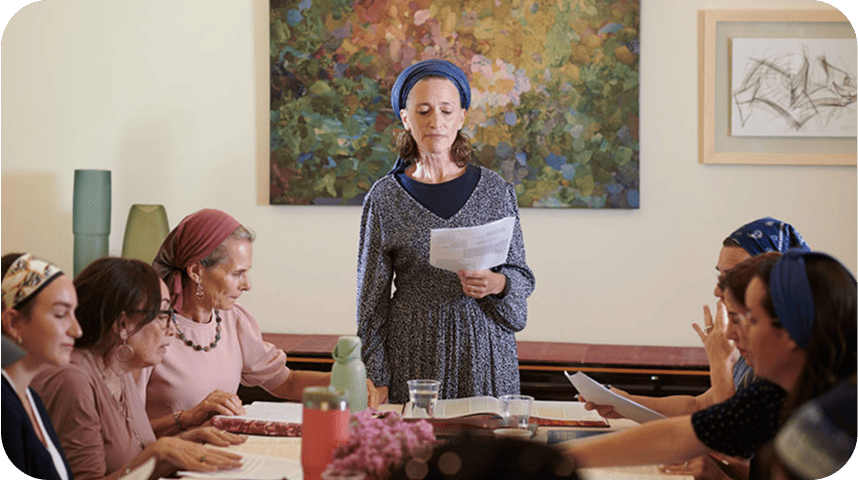
Dvar Torah
The Dvar Torah at a siyum lets the learner share with those gathered something that she learned from the masechet. Most commonly, the Dvar Torah includes either an in-depth insight into a particular sugya (section/topic) or a general overview of the masechet. Learners might choose to connect their learning to an event in their lives or to discuss a passage that particularly spoke to them.

Beginning the Next Project
When we complete the reading of the entire Torah, we begin straight from “Bereishit” once more. Similarly, upon finishing a masechet, it is customary to begin the following tractate at the siyum itself. This sends the message that the siyum, contrary to its literal meaning, is not the end. Commencing a new unit of Torah shows one’s dedication to continuing her Torah study perpetually.
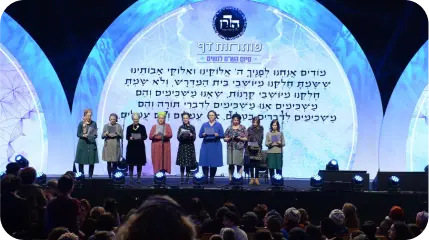
Women’s Siyum HaShas 2020
Upon completing 7.5 years of Daf Yomi study, 2,711 dapim, a Siyum HaShas is celebrated. On January 5, 2020, Hadran hosted the first international Siyum HaShas for Women in Jerusalem, with over 3,300 women in attendance.
Watch now



